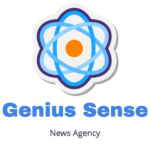MuleSoft Architects are essential in guaranteeing smooth data flow and connection in the dynamic world of IT and integration. Industry demand for their knowledge of MuleSoft, a top integration platform, is strong. We’ll explore the world of MuleSoft Architects in this post, outlining their duties and responsibilities and providing practical examples.
Read More: Jason spencer Philadelphia
The roles and responsibilities of architects at MuleSoft
1. Design of Solutions
Creating integration solutions that are suited to the requirements of a company is one of a MuleSoft Architect’s primary duties. This entails comprehending the needs of the company, choosing the proper MuleSoft components, and designing an architecture that guarantees security, scalability, and adaptability.
As an illustration, consider a hospital facility that must combine patient data from many systems. A solution that securely links Electronic Health Records (EHR) systems would be created by a MuleSoft Architect, guaranteeing patient data accessibility and compliance with healthcare laws.
2. The API Plan
Architects at MuleSoft play a key role in creating and implementing API strategies. By defining best practices, standards, and rules for API development, they encourage uniformity and reusability throughout the whole company.
Example: To enable relationships with third parties, an online retailer want to make its product catalog available through APIs. To ensure consistency for API development in the future, a MuleSoft Architect would specify how these APIs should be created, documented, and managed.
3. Technical Guidance
Technical teams are led by MuleSoft Architects, who offer direction, supervision, and mentorship. They make sure that development teams use solutions that are in line with the objectives of the company and adhere to best practices for architecture.
Example: Using MuleSoft, a financial institution is developing a payment processing system. Leading a group of developers, the MuleSoft Architect makes sure they follow the architecture’s overarching goals, scalability specifications, and security guidelines.
4. Governance of Integration
To ensure the consistency and quality of integrations, MuleSoft Architects create integration governance policies. This entails creating guidelines for data mapping, establishing protocols for addressing errors, and making sure that industry rules are followed.
Example: A retail firm uses MuleSoft to combine its in-store and online sales platforms. In order to guarantee precise inventory updates and consistent customer data across both channels, the Architect puts governance standards into place.
5. Enhancement of Performance
Improving integration performance is an essential duty. In order to guarantee the best possible data throughput and response times, MuleSoft Architects keep an eye on system health, spot bottlenecks, and apply improvements.
Example: To track shipments in real-time, a logistics business uses MuleSoft. Delivery delays are minimized by the Architect’s constant monitoring of the integration to guarantee correct and timely data updates.
6. Debugging and Troubleshooting
MuleSoft Architects are frequently called upon to troubleshoot and fix integration difficulties when problems develop. They quickly identify and fix problems by utilizing their in-depth knowledge of MuleSoft.
Example: A telecom business experiences sporadic problems with the processing of call detail records (CDRs). In order to ensure proper billing, the MuleSoft Architect looks into the matter, finds a misconfigured transformation step, and fixes it.
7. Record-keeping and Information Exchange
It’s crucial to communicate well. To make sure their knowledge is shared with the entire team, MuleSoft Architects describe integration solutions, provide API documentation, and lead knowledge-sharing sessions.
For instance, to facilitate understanding and system maintenance by future developers, the MuleSoft Architect of an educational institution keeps thorough documentation on the interface between the student information system and the e-learning platform.
In summary
Integration project success is greatly dependent on MuleSoft Architects. Solution design, API strategy, technical leadership, governance, performance optimization, troubleshooting, documentation, and knowledge sharing are just a few of their many duties.
Their knowledge not only guarantees effective data flow but also assists enterprises in realizing MuleSoft’s full potential for accomplishing their goals.
